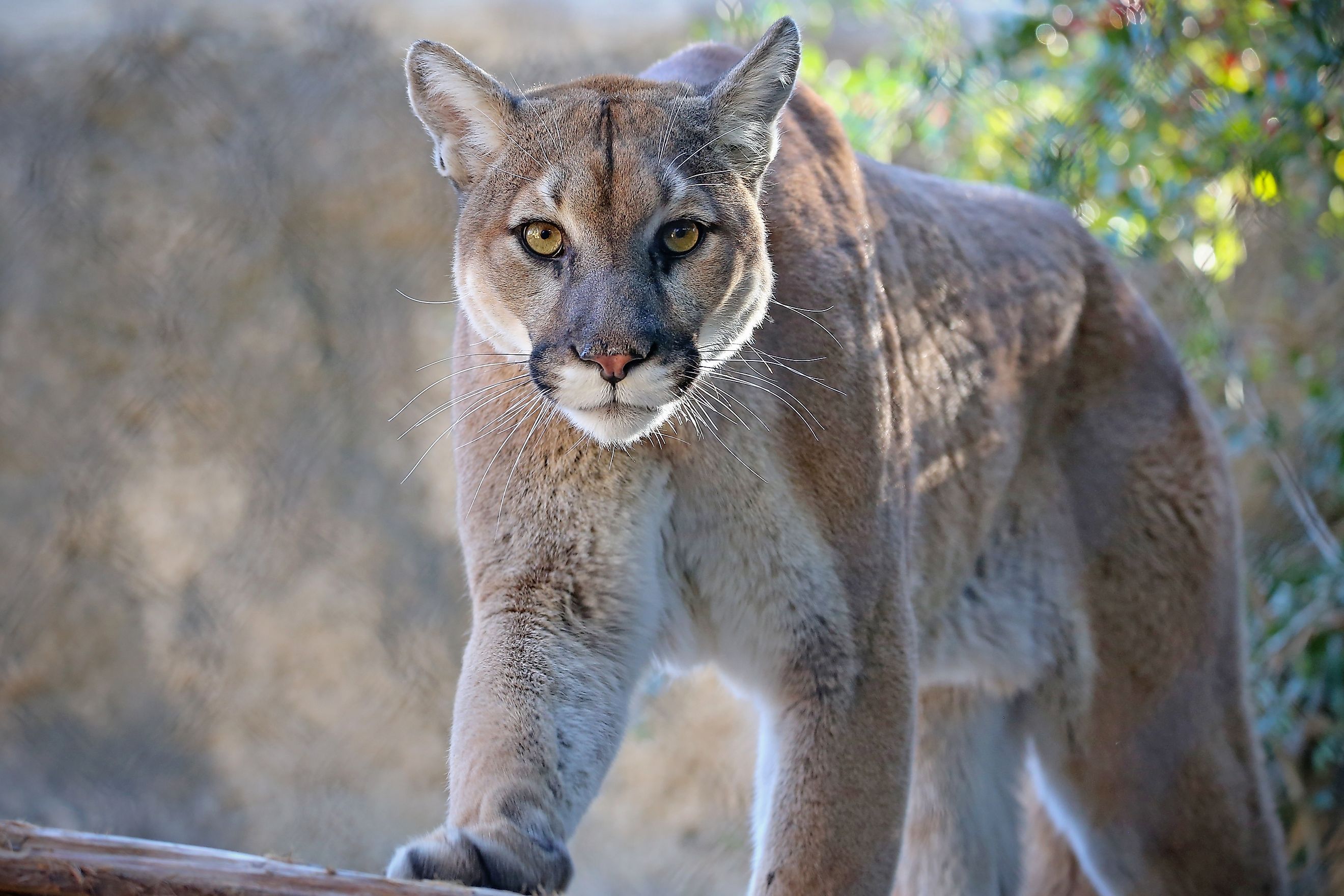
The 13 Deadliest Animals in South Dakota
The midwestern state of South Dakota is home to the infamous Mount Rushmore and diverse wildlife only found in this region of the United States. For nature enthusiasts, this state is a treasure trove. However, whenever one finds themselves in nature, one should always err on the side of caution. While out in the wilderness, there are always animals you should be wary of. This article takes a closer look at the 13 deadliest animals in South Dakota so you can ensure your safety while still having an enjoyable outdoor experience.
Western Black Widow
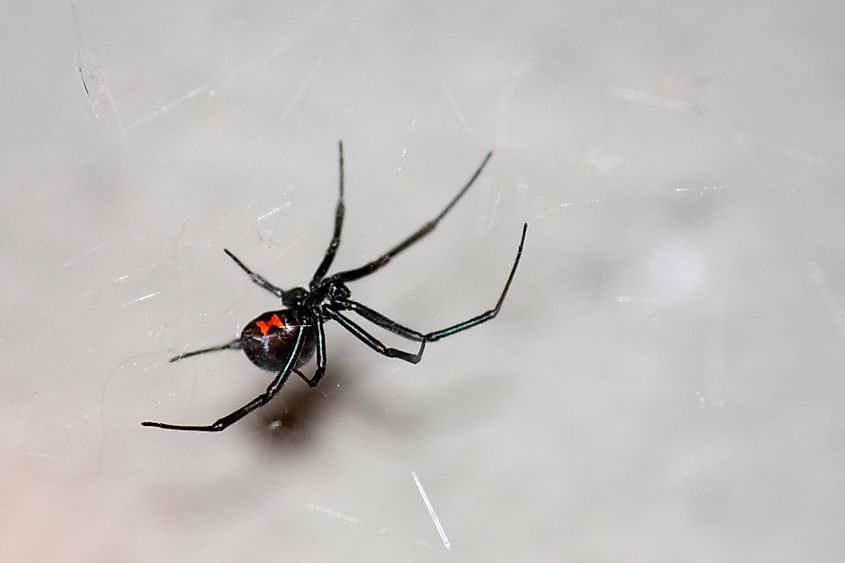
The western black widow (Latrodectus hesperus) is one of the world's most easily recognizable and deadly spiders. While this spider may not be as common in South Dakota, that doesn't make it any less venomous. The black widow’s bite injects venom that attacks the nervous system and spreads throughout the body using the bloodstream.
A good indicator of whether you have encountered this spider species is that it has the recognizable red hourglass shape on its underbelly, while the rest of its body is glossy back. These spiders enjoy dark and moist spaces and are often skittish around humans, but they will bite if they need to defend themselves.
Elk
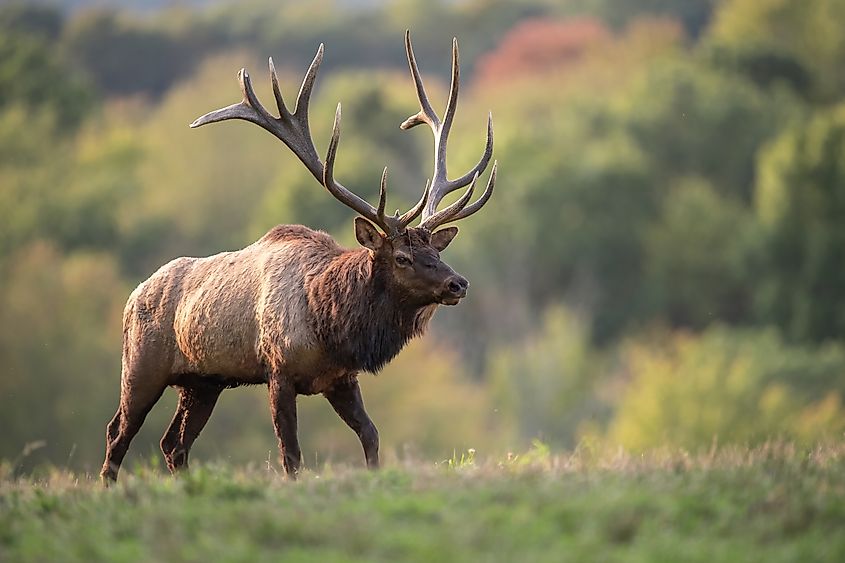
Elk (Cervus canadensis) are large members of the deer family known for their impressive antlers and loud bugling calls during the mating season. They are herbivores that herd together in groups of up to 400 and can only be found in a few locations in South Dakota, such as the Black Hills. What makes them dangerous is that they often wander into populated areas and become aggressive around their young or during the breeding season.
While you may think the males are more aggressive with their enormous antlers and large bodies that can weigh up to 700 pounds (318 kg), you are more likely to experience aggression from the female elk. This is especially true when mothers are extremely defensive over their young children during the calving season.
Prairie Rattlesnake
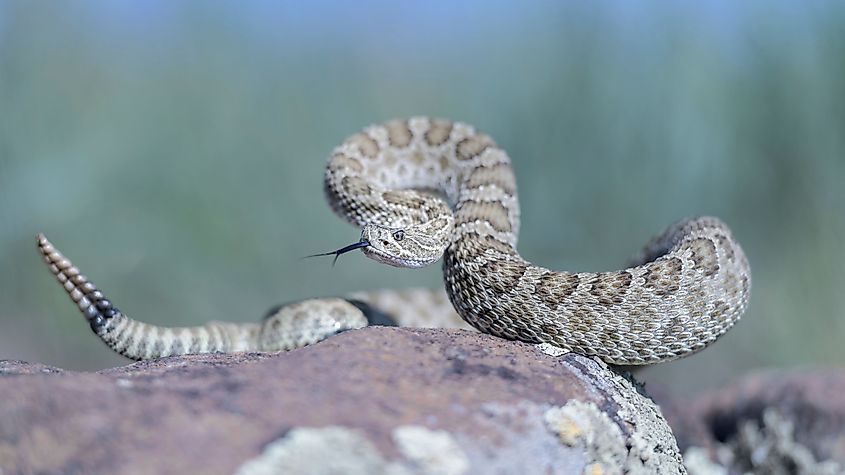
While most of South Dakota’s snake species are non-venomous, residents should be cautious about the Prairie Rattlesnake (Crotalus viridis). A full-grown prairie rattlesnake can reach anywhere between 3.3 and 5 feet (100 and 152 cm) long. One can identify these snakes by color, as their skin is often light brown with dark blotches that warp into rings near the base of the tail. Look for a broad triangular-shaped head and, of course, the familiar tail rattle that warns weary travelers of this dangerous snake.
Their venom is unique, possessing both neurotoxic and hemotoxic properties. Although bites from these snakes are rare, they can be fatal to humans and should be taken seriously. Additionally, the prairie rattlesnake occasionally strikes without giving a warning rattle, so it's crucial to seek medical attention immediately if bitten.
Mosquito
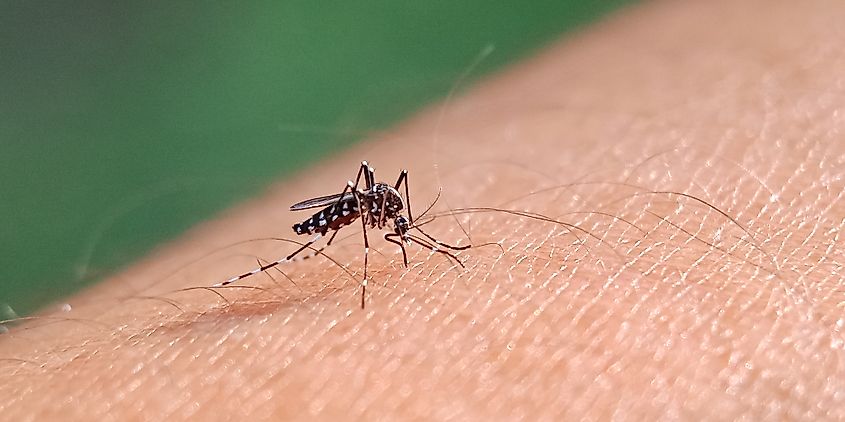
Mosquitoes are nothing to shrug at; no matter how puny they seem, they are responsible for numerous human deaths worldwide due to their ability to spread disease. In South Dakota specifically, you will find varying species of mosquitoes, with two main species—Aedes vexans and Culex tarsalis.
Due to their blood diet, mosquitoes can carry a variety of deadly diseases, the most common of which are the West Nile virus, malaria, and yellow fever. According to reports by the CDC, diseases transmitted by mosquitoes cause over 700,000 deaths per year worldwide. While many efforts have been made to control the growth of mosquito populations, they are still considered dangerous to humans. Thus, people in South Dakota must take active measures to protect themselves against mosquitoes and the many diseases they carry.
Ticks
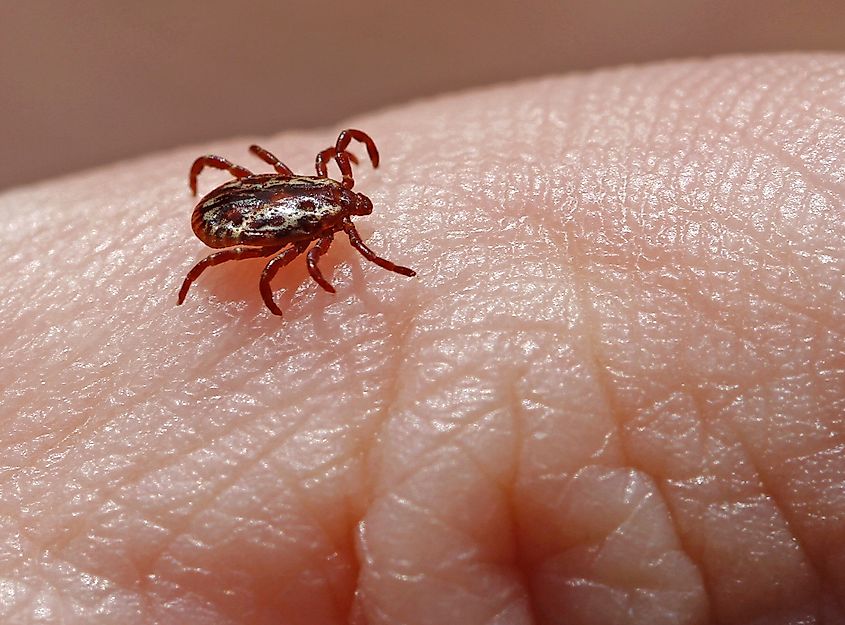
In South Dakota, visitors and residents should be wary of ticks between April and October due to the warmer weather, which promotes development and activity. While ticks can be found all year round, they are far more active during these months due to the ideal weather conditions, but they can also still be active during milder winter seasons. The most common ticks you may encounter include the American dog tick (Dermacentor variabilis), Rocky Mountain wood tick (Dermacentor andersoni), and black-legged tick (Ixodes scapularis).
Like mosquitos, ticks have a blood diet and can spread disease once they bite your skin. They can also cause Rocky Mountain spotted fever, Powassan virus, Lyme disease, and tularemia. If you find one has latched onto you, it is essential to remove it carefully and watch for any unusual symptoms you experience after being bitten.
Buffalo
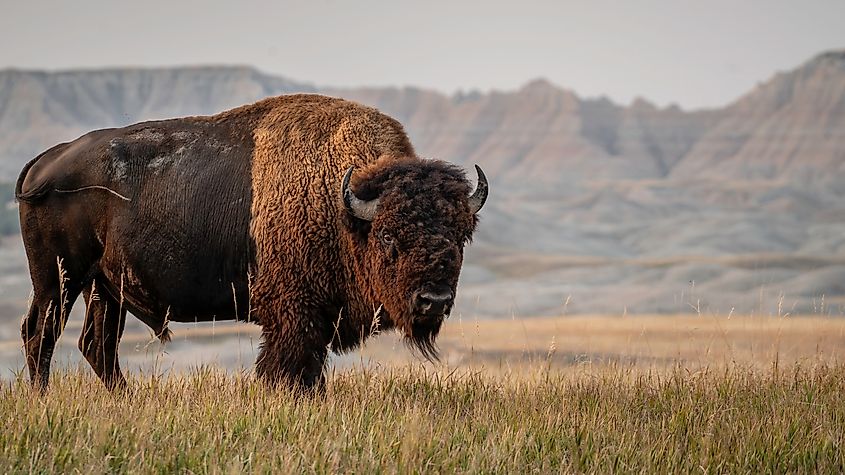
Buffalo (Bison) are majestic and formidable mammals that were once near threatened, but thanks to conservation efforts, their population has stabilized. These herbivores are easily identified by their large, stocky heads, curved horns, shoulder humps, and long brown hair covering their bodies. Depending on the season, buffalo typically gather in groups ranging from 200 to 1,000.
While buffalo generally graze peacefully, they can become aggressive if a human gets too close. Due to their immense weight, ranging from 700 to 2,600 pounds (318 to 1,179 kg), these mammals can easily cause fatal damage to humans. To stay safe, maintain a minimum distance of 25 yards. Signs that a buffalo may charge include pawing the ground and stopping their current activity to focus intently on you. Additionally, it's crucial to keep your distance to avoid the possibility of a stampede.
Snapping Turtle
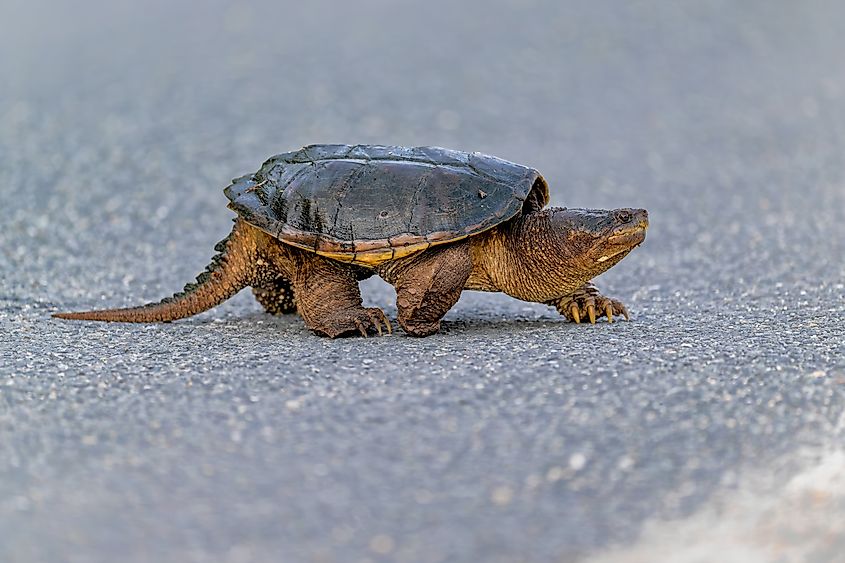
Snapping turtles (Chelydra serpentina) are fascinating yet potentially dangerous creatures found in South Dakota’s ponds, marshes, lakes, and rivers. These turtles are recognizable by their dark brown, black, or olive-green carapace, often covered in moss, long tails, webbed feet, and chunky heads with curved, beak-shaped mouths. They are also quite bulky, and an average adult snapping turtle can weigh up to 35 pounds (16kg).
While snapping turtles generally avoid human interaction, they can pose a threat if provoked or handled. An adult snapping turtle has a bite force of around 220 newtons, capable of snapping bone and causing severe injury. Their powerful jaws can deliver a painful bite, making it crucial to exercise caution when near them. If you encounter a snapping turtle, it's best to admire it from a safe distance and avoid disturbing it.
Mountain Goat
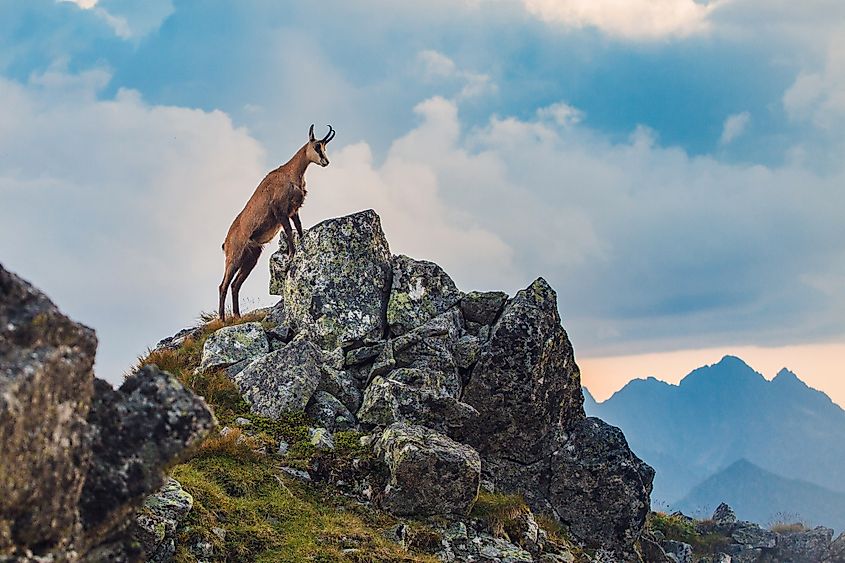
Mountain goats (Oreamnos americanus) may seem docile, but they can be dangerous if approached too closely. These herbivores are easily identified by their thick white coats, long beards, and 5.9 - 11-inch (15 - 28 cm) black horns. They weigh between 100 and 300 pounds (45 and 136 kg) and are well-adapted to their rugged mountainous habitats.
Mountain goats can become aggressive around humans, especially during close encounters. Their horns are their most deadly feature, and they will use them to defend themselves if they feel threatened. It is recommended that you maintain a distance of at least 50 yards from these animals. This distance is ideal as, despite their peaceful appearance, mountain goats can maim or even kill any perceived threat with their sharp horns.
Common Desert Centipede
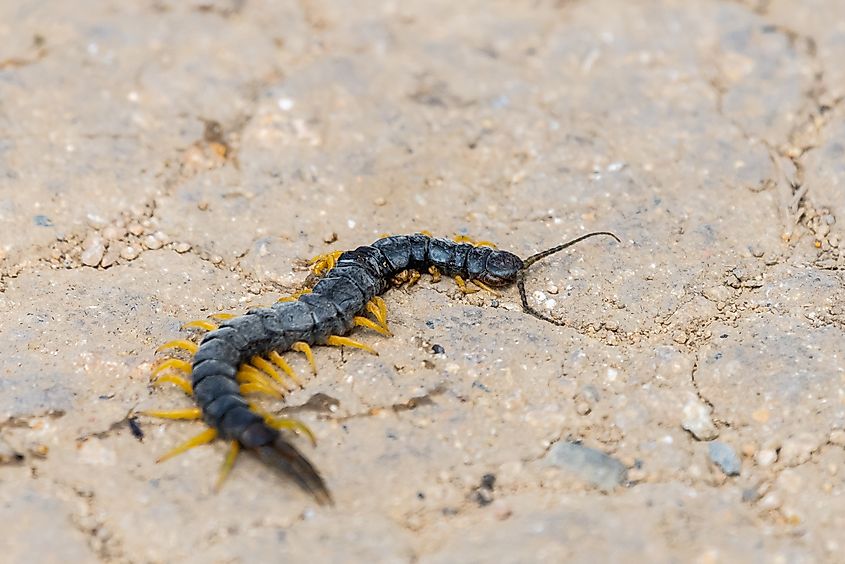
The common desert centipede (Scolopendra polymorpha) is an insect you definitely want to avoid due to its extremely painful bite. Reaching up to 8 inches (20 cm) in length, these centipedes can be identified by their deep orange head and tail. The rest of their body comes in various colors, earning them the nickname "multicolored centipede." These 42-legged insects inhabit concealed spaces like under rocks, plants, and decaying wood.
The common desert centipede is considered one of South Dakota’s most dangerous as its bite injects venom that causes excruciating pain, comparable to a bullet ant sting. Although not typically fatal, the venom can cause severe swelling, pain, and potential allergic reactions. There is no antivenom for centipede bites, making it crucial to seek medical attention immediately if bitten. Despite their venomous bite, some studies are exploring the therapeutic applications of centipede venom in drug development. Nonetheless, it's best to keep a safe distance from these arthropods to avoid a painful encounter.
Porcupine
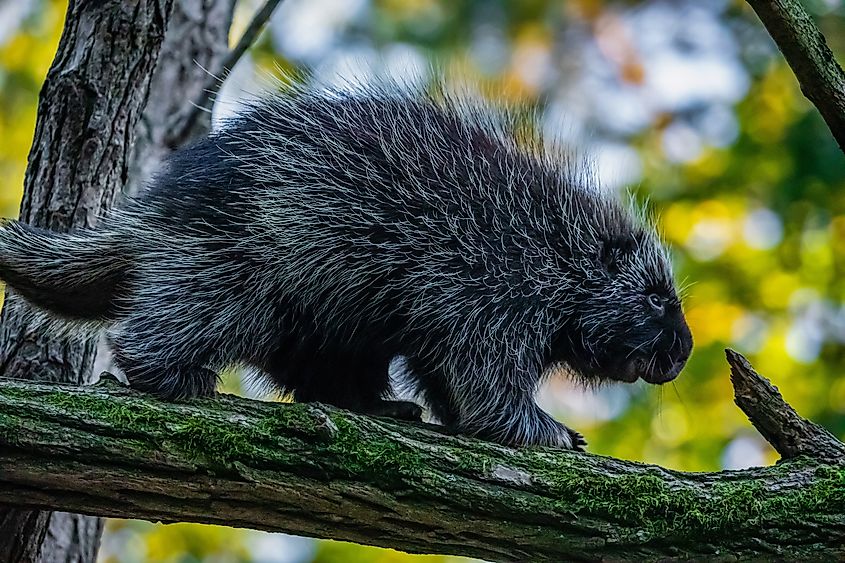
Porcupines (Erethizontidae) are identifiable by their distinctive quills, which can grow up to 3 inches long. Covered in up to 30,000 quills, they have a stocky body, short legs, and a small face. Typically, porcupines are about 25-36 inches (60-90 cm) long and weigh 12-35 pounds, with a coat that ranges from brown to black.
These animals use their quills as a defense mechanism. If threatened, a porcupine will raise and rattle its quills as a warning. If an attacker ignores this, the porcupine can swing its tail to embed the quills into the assailant. The quills are barbed and difficult to remove, often causing painful injuries that may become infected due to the bacteria they carry.
Striped Skunk
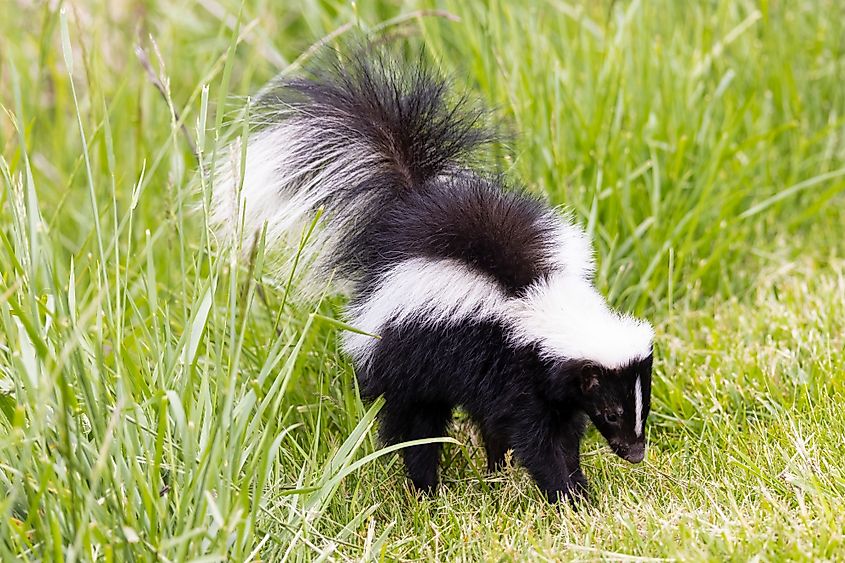
Striped skunks (Mephitis mephitis) are easily recognizable by their black fur, with distinctive white stripes running from their snout to their tail. They typically weigh 4-10 pounds (1.8-4.6 kg) and are about 20-30 inches (52-77 cm) long, including their bushy tail.
These skunks are known for their potent defensive spray, which can cause temporary blindness, nausea, and intense pain. The spray can reach up to 20 feet, so it's best to keep a distance of at least 30 feet. Skunks are nocturnal and prefer to avoid human contact, but if cornered, they will lift their tail as a warning before spraying. Skunks are also potential carriers of the rabies virus, so if bitten or scratched, it's crucial to seek medical attention immediately.
Coyote
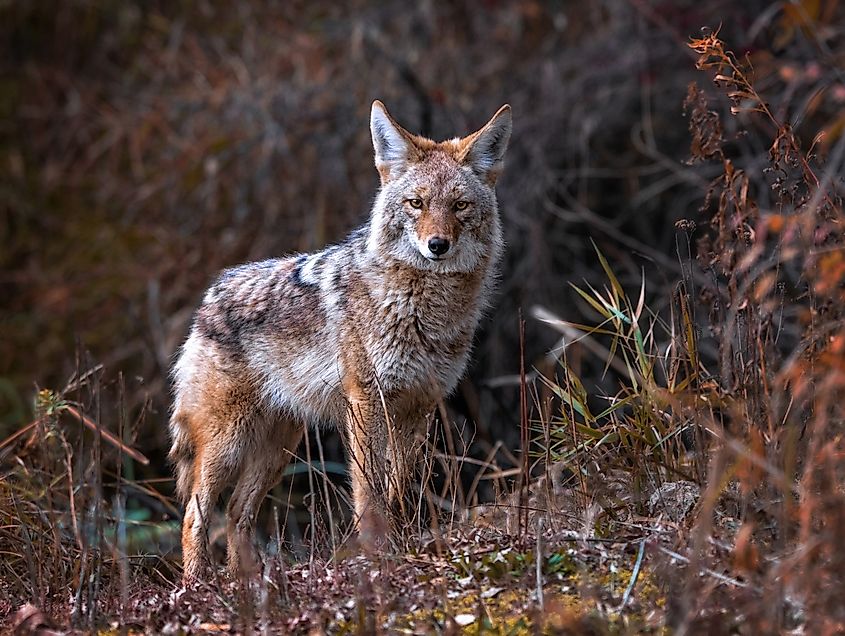
Coyotes (Canis latrans) have a grayish-brown coat with a bushy tail. They can weigh between 18 and 44 pounds (8 and 20 kg) and stand about 1.5 to 2 feet (30 to 46 cm) tall at the shoulder. They are highly adaptable and can be found in various habitats, including urban areas. Coyotes are opportunistic hunters and scavengers, feeding on small mammals, insects, fruits, and even household pets if given the chance. While coyote attacks on humans are rare, it's essential to keep your distance and not feed them, as this can encourage aggressive behavior.
Mountain Lion
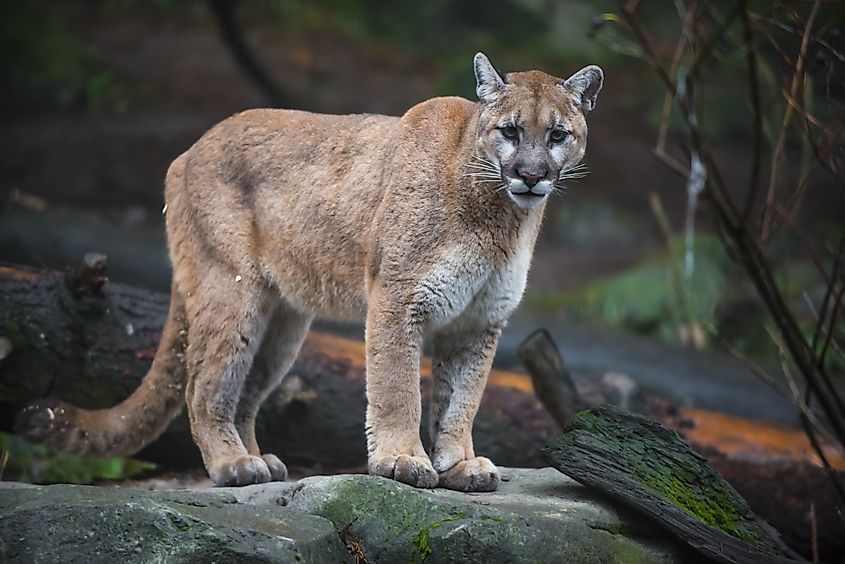
Mountain lions (Puma concolor), also known as cougars, are large felines with uniformly colored tawny or brownish fur and weigh between 117 and 160 pounds (53 and 73 kg). They are about 2 to 3 feet (61 to 91 cm) tall at the shoulder and can be 6 to 8 feet (183 to 244 cm) long, including their tail.
These solitary predators are primarily found in areas with plentiful deer, elk, or livestock. They are elusive and prefer to avoid humans, but can become dangerous if they feel threatened or if their young are in danger. Mountain lions have powerful limbs and sharp claws, making them formidable hunters. If encountered, do not run; instead, make yourself appear larger and avoid turning your back on the animal.
Conclusion
With humans encroaching on and dominating many of these deadly animals' habitats, you don’t need to be out in the middle of nature to encounter one. Deadly animals have been found strolling across golf courses or lounging on residential properties, even in South Dakota. While these animals are quite a sight to behold when seen in their natural environment, it's best to always keep a healthy and respectful distance. So, if you encounter any of the names discussed on this list, be wary and take precautions to remain safe.











